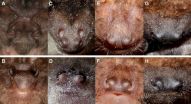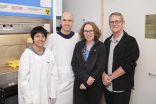The team's findings are published in a case report today in the New England Journal of Medicine. Prior to receiving the therapy, the patient had already received nine different therapy regimens in the five years since her diagnosis, including a previous autologous stem cell transplant, which had only controlled her disease for a few months. Her bone marrow was almost entirely filled by cancerous cells when she entered the study. By 130 days after receiving the infusion of engineered cells, tests revealed no evidence of disease. The patient - who was the first to be treated as part of this trial - remains in remission more than 12 months after receiving this therapy.
The new report expands on data that were presented during the American Society of Clinical Oncology meeting in June 2015 about the first five myeloma patients to receive CTL019, which was tested in trials for leukemia beginning in 2010. Now, the Penn researcher team also report updates on the myeloma trial's overall progress: Of ten patients who have received the therapy to date, six remain progression-free, though two patients have only very recently been treated.
"We couldn't be more pleased with this patient's response," said the study's co-lead author, Alfred Garfall, MD, an assistant professor of Hematology/Oncology in Penn's Abramson Cancer Center and Perelman School of Medicine. "We believe her CTL019 cells made the difference, since we would not have expected such a durable remission with a transplant alone, considering the very transient response this patient had to her first transplant several years ago."
CTL019 begins with each patient's own T cells, collected through a procedure similar to dialysis. The cells are then reprogramed to hunt and potentially kill cancer cells in the patient's body. Patients who have enrolled in trials of this approach for acute lymphoblastic leukemia (ALL), chronic lymphocytic leukemia (CLL), and non-Hodgkin lymphoma (NHL) typically undergo lymphodepleting chemotherapy before receiving an infusion of their newly engineered cells. The modified T cells contain a protein known as a chimeric antigen receptor (CAR), which is designed to target the CD19 protein found on the surface of B cells, including the cancerous B cells that characterize several types of leukemia and lymphoma.
The team designed a different approach to study the therapy in myeloma, adding in an infusion of the patient's own stem cells along with their lymphodepleting chemotherapy (melphalan), followed by CTL019 infusion about two weeks later. Although myeloma is, like leukemias and lymphomas, a cancer involving white blood cells known as lymphocytes, myeloma cells don't traditionally express CD19 on their surface because they arise from the most mature type of lymphocytes - plasma cells.
"There was some skepticism about whether a CD19-directed therapy would work in this disease, since nearly all of these patients' cancerous plasma cells do not express CD19," said the study's senior author, Edward Stadtmauer, MD, chief of Hematologic Malignancies and a professor of Hematology/Oncology in Penn's Abramson Cancer Center and Perelman School of Medicine. "Since there was data showing that the possible stem cells can be CD19-positive, our hypothesis was that we may be able to devise a therapy targeted at early precursors of those cells."
The patient experienced transplantation-related side effects during the time prior to receiving CTL019, including neutropenia and thrombocytopenia, nausea, fever, and an infection. After receiving the engineered cells, she experienced no fevers or other signs of cytokine release syndrome (CRS), a condition that has been observed in other patients undergoing CTL019.
Funding for the study was supported in part by Novartis, by grants from the National Institutes of Health (K12CA076931, K08CA166039, and 5R01CA165206) and the Conquer Cancer Foundation.
Editor's notes: The University of Pennsylvania has licensed technologies involved in this trial to Novartis. Some of the scientists involved in these trials are inventors of these technologies. As a result of the licensing relationship with Novartis, the University of Pennsylvania receives significant financial benefit, and these inventers have benefitted financially and/or may benefit financially in the future. Additional disclosure information is available in the paper.
Because CTL019 is an investigational therapy, the safety and efficacy profile has not yet been established. Access to investigational therapies is available only through carefully controlled and monitored clinical trials. These trials are designed to better understand the potential benefits and risks of the therapy. After CTL019 infusion, cytokine release syndrome (CRS) may occur when the engineered cells become activated and multiply in the patient's body resulting in the release of cytokines. During CRS, patients typically experience varying degrees of flu-like symptoms with high fevers, nausea, muscle pain, and in some cases, low blood pressure and breathing difficulties. CRS severity correlates with disease burden. Additionally, CRS also can occur in other non-CAR therapy settings including some monoclonal antibodies.
INFORMATION:
Penn Medicine is one of the world's leading academic medical centers, dedicated to the related missions of medical education, biomedical research, and excellence in patient care. Penn Medicine consists of the Raymond and Ruth Perelman School of Medicine at the University of Pennsylvania(founded in 1765 as the nation's first medical school) and the University of Pennsylvania Health System, which together form a $4.9 billion enterprise.
The Perelman School of Medicine has been ranked among the top five medical schools in the United States for the past 17 years, according to U.S. News & World Report's survey of research-oriented medical schools. The School is consistently among the nation's top recipients of funding from the National Institutes of Health, with $409 million awarded in the 2014 fiscal year.
The University of Pennsylvania Health System's patient care facilities include: The Hospital of the University of Pennsylvania and Penn Presbyterian Medical Center -- which are recognized as one of the nation's top "Honor Roll" hospitals by U.S. News & World Report -- Chester County Hospital; Lancaster General Health; Penn Wissahickon Hospice; and Pennsylvania Hospital -- the nation's first hospital, founded in 1751. Additional affiliated inpatient care facilities and services throughout the Philadelphia region include Chestnut Hill Hospital and Good Shepherd Penn Partners, a partnership between Good Shepherd Rehabilitation Network and Penn Medicine.
Penn Medicine is committed to improving lives and health through a variety of community-based programs and activities. In fiscal year 2014, Penn Medicine provided $771 million to benefit our community.
CONTACT:
Holly Auer
O: 215-349-5659
C: 215-200-2313
holly.auer@uphs.upenn.edu


